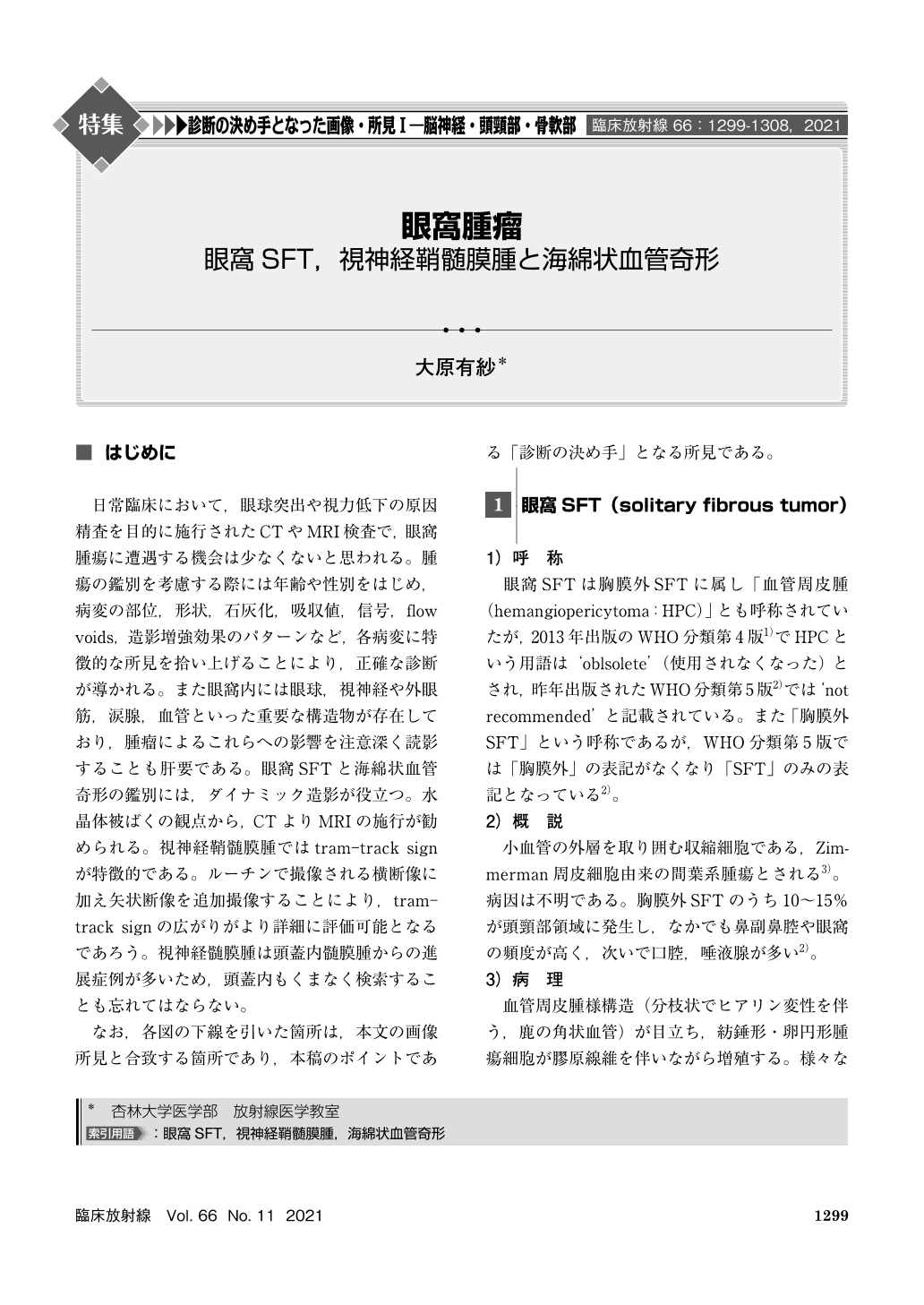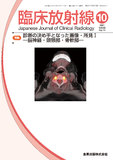Japanese
English
- 有料閲覧
- Abstract 文献概要
- 1ページ目 Look Inside
- 参考文献 Reference
日常臨床において,眼球突出や視力低下の原因精査を目的に施行されたCTやMRI検査で,眼窩腫瘍に遭遇する機会は少なくないと思われる。腫瘍の鑑別を考慮する際には年齢や性別をはじめ,病変の部位,形状,石灰化,吸収値,信号,flow voids,造影増強効果のパターンなど,各病変に特徴的な所見を拾い上げることにより,正確な診断が導かれる。また眼窩内には眼球,視神経や外眼筋,涙腺,血管といった重要な構造物が存在しており,腫瘤によるこれらへの影響を注意深く読影することも肝要である。眼窩SFTと海綿状血管奇形の鑑別には,ダイナミック造影が役立つ。水晶体被ばくの観点から,CTよりMRIの施行が勧められる。視神経鞘髄膜腫ではtram-track signが特徴的である。ルーチンで撮像される横断像に加え矢状断像を追加撮像することにより,tram-track signの広がりがより詳細に評価可能となるであろう。視神経髄膜腫は頭蓋内髄膜腫からの進展症例が多いため,頭蓋内もくまなく検索することも忘れてはならない。
An orbital tumor as the cause of orbital protrusion and decreased visual acuity is not a rare remark in the computed tomography scan or magnetic resonance imaging in daily clinical settings. In order for a correct diagnosis, clinical information such as patients’ age and sex as well as one of imaging such as the location, morphology, density, signal, and enhancement pattern of the tumor are in necessity. There are intraorbitally organs such as the globe, optic nerve, extraocular muscles, lacrimal glands and vessels, and their careful radiographic interpretation is essential. Dynamic study of either computed tomography scan or magnetic resonance imaging is crucial for distinguishing orbital cavernous venous malformations from other orbital masses such as solitary fibrous tumor despite the study of magnetic resonance imaging is favored in the aspect of radiation exposure to optic lens. Tram track sign is characteristic for optic nerve sheath meningioma, which is easier to be evaluated with multi-planar imaging of coronal and sagittal views. Because of its frequent derivation from intracranial meningiomas, the whole brain careful radiographic interpretation is essential.

Copyright © 2021, KANEHARA SHUPPAN Co.LTD. All rights reserved.


